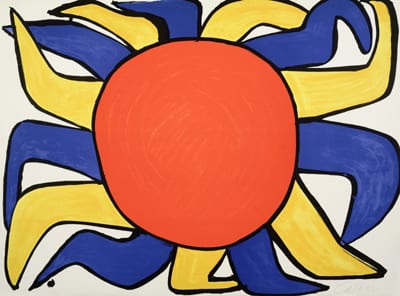
- This event has passed.
PORTFOLIOS from the LUAG Permanent Collection: Calder and Dali
October 9, 2009 - February 12, 2010

Limited edition portfolios of photography and printmaking from the university’s permanent collection reflect multiple aspects of 20th century contemporary art and artists. Each portfolio also represents an aesthetic unit or conceptual essay, complete with title, introduction and notes on technical production.
Our seven galleries on three campuses are visual laboratories of our teaching collection. The mission of Lehigh University Art Galleries/Museum Operation is to inspire, develop and promote visual literacy through cross-disciplinary educational opportunities that supplement formal classroom study to benefit students, faculty, and the community at large.
Alexander Calder: Our Unfinished Revolution
Salvador Dali: Playing Cards Suite
Alexander Calder (1898-1976) was an American sculptor, painter, and designer. Calder graduated from Stevens Institute of Technology in 1919 with a degree in mechanical engineering. After taking classes at the Arts Students League, he became a freelance artist and illustrator, and published a book titled Animal Sketching. In the 1920s, Calder began traveling to Paris, becoming influenced by the work of Klee and Miró. In 1930, after visiting Piet Mondrian’s studio, he began to create abstract constructions incorporating biomorphic forms, specifically with variations on the mobile, for which he is most known. Calder divided his time between trips abroad and his farm in Roxbury, Connecticut, and as his commissions grew more frequent, his mobiles became increasingly gigantic. Examples are Flamingo, the stabile at Federal Center Plaza in Chicago, and La Défense, at the Rond Point de La Défense Métro station in Paris.
Salvador Dali (1904-1989) was born in the small agricultural town of Figueres, Spain where he spent his boyhood. His parents built his first studio at the family’s summer home in the coastal fishing village of Cadaques. He became internationally known when three of his paintings were shown in the third annual Carnegie International Exhibition in Pittsburgh in 1928. The following year, Dali held his first one-man show in Paris. Dali soon became a leader of the Surrealist Movement. His painting, The Persistance of Memory, with the soft or melting watches is still one of the best-known surrealist works.
As an artist, Salvador Dali was not limited to a particular style or media. The body of his work, from early impressionist paintings through his transitional surrealist works, and into his classical period, reveals a constantly growing and evolving artist. Dali worked in all media, leaving behind a wealth of oils, watercolors, drawings, graphics, and sculptures, films, photographs, performance pieces, jewels and objects of all descriptions.
Lithography is a printmaking process invented in the late 18th century, based on the antipathy of grease and water. An image is drawn on a smooth stone or plate using pencils, crayons, tusche, grease, lacquer, or synthetic materials, or sometimes by means of a photochemical or transfer process. After the image is drawn, the stone or plate is dampened and ink is applied with a roller. The greasy image repels the water and holds the oily ink while the rest of the stone’s surface does the opposite. Then the ink is transferred to paper by pressure applied in the printing press.









